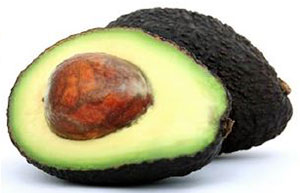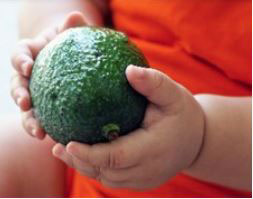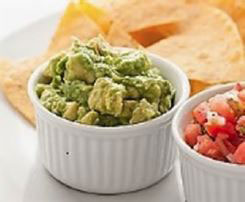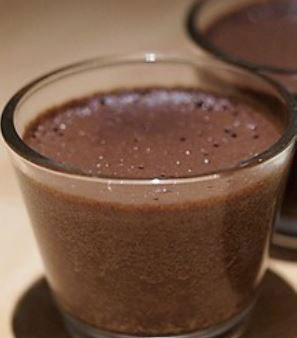All About Avocados
By: Erin Durant, 4-H/Family and Consumer Science Agent, Gunnison County

Avocados have an ancient, curious history. Native to the tropics of Central America, legend has it that a Mayan princess ate the first avocado and that it held mystical and magical power. From easy-to-digest baby food to appetizer, salad, main dish, or dessert, avocados can be enjoyed in many different ways. They remain popular in modern-day cuisine due to their versatility and nutritional value.
Avocados are a rich fruit with a smooth, creamy texture and a delicate nutty flavor. They are grown year-round and are typically pear-shaped. The skin and large seed must be removed before eating, which leaves a fleshy interior ranging in color from shades of yellow to yellow-green.
Avocados contain nearly 20 vitamins and minerals, including vitamin C, vitamin B6, vitamin K, vitamin E, folate, potassium, riboflavin, niacin, and magnesium. They are a great source of fiber, which aids in healthy digestion, keeps us feeling full, and promotes heart health. They are also high in monounsaturated fats. These healthy fats are known to improve cholesterol levels, decrease risk of heart disease, aid in controlling blood sugar, and provide benefits to your skin, brain, and digestive system.
Choosing Avocados

Ripe avocados are firm but give slightly when pressed with a finger. However, because avocados do not ripen on the tree, it is often necessary to buy them before they are ripe and allow them to ripen at home. If you buy a hard, unripe avocado, leave it on your counter for 2-5 days to let it ripen. To quicken ripening, place avocados in a brown paper bag with an apple. Ripe avocados can be stored in the refrigerator for up to 5 days.
Preparing Avocados

Follow these tips to make peeling and pitting an avocado easier:
- Wash the fruit with cool tap water.
- Cut the avocado in half lengthwise around the pit.
- Rotate the halves to separate.
- Use a spoon to gently remove the pit.
- Peel the fruit, using your fingers or a knife to remove the skin. You can also use a spoon to scoop out the avocado meat.
- Slice as desired with the flat side down.
Avocados taste best when eaten at room temperature. They can take on a bitter taste when exposed to high heat or prolonged cooking. When using in cooked dishes, add the avocado at the last minute, exposing the fruit to only gentle heat and preserving its delicate, nutty flavor.
When exposed to air, avocado flesh turns brown. When storing, first sprinkle with lemon juice, lime juice, or vinegar, place in an airtight covered container in your refrigerator, and eat within two days.
Although whole and sliced avocados do not freeze well, you can freeze avocado puree, though it may be slightly watery when thawed. Simply mash the avocado flesh with 2 tablespoons lime juice, and store in an airtight container with ½-inch headspace for up to six months in the freezer. Thaw the puree in the refrigerator, and use within three days.
Let’s Talk
Avocados provide a great opportunity to talk to your kids about healthy fats. Ex-plain the difference between healthy and unhealthy fats. Unhealthy fats are those that mostly come from animal products and processed foods. Healthy fats are those that typically come from plant-based foods, oils, and fish. Unhealthy fats in-crease cholesterol levels and lead to a higher risk of heart disease, whereas healthy fats, like those found in avocados, can improve cholesterol and decrease the risk of heart disease.
Invite your kids to help you prepare an easy snack with avocados. Slice the avocado in half, and have them scoop out the flesh and spread it on toast instead of butter. Or use mashed avocado on a sandwich instead of mayonnaise. You could also fill the small “bowl” in the middle of the fruit with tuna or chicken salad. Or make guacamole, a classic avocado dish that is often associated with Mexican cuisine. Just mash the avocado, mix with a little garlic, onion, lemon juice, salt, and pep-per. Enjoy as a dip for vegetables, a topping for a main dish, or a spread for sandwiches.
Recipe for Health

Salty Chili Chocolate Avocado Mousse (Vegan)
Ingredients:
- 2 medium ripe avocados
- ½ cup cocoa powder
- ¼ cup pure maple syrup
- ½ tsp. vanilla extract
- ¼ tsp. cinnamon
- ¼ scant tsp. cayenne pepper (optional)
- pinch of salt
- flaked sea salt for garnish
Instructions:
- Puree all of the ingredients except for the flaked salt in a food processor until smooth.
- Refrigerate to cool.
- Divide among 4-6 small serving dishes, and top with a sprinkle of sea salt.
- Keeps for up to 2 days refrigerated in an airtight container.
Adapted from the Barre 3 Blog (https://blog.barre3.com/recipes/salty-chili-chocolate-mousse/)





